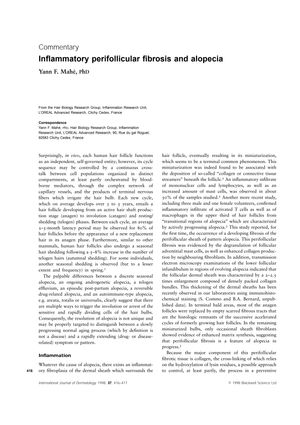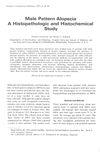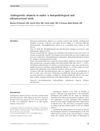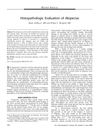Inflammatory Perifollicular Fibrosis And Alopecia
June 1998
in “
International Journal of Dermatology
”
inflammatory perifollicular fibrosis alopecia miniaturization of hair follicles collagen deposition inflammatory infiltrate immune cells lysyl hydroxylase inhibitor 2,4-diamino-pyrimidine-3-oxide 2,4-DPO collagen cross-linking hair density seasonal shedding pro-inflammatory cytokines chemokine gradient 5α-reductase microbial flora hair loss hair thinning immune response collagen buildup inflammation lysyl hydroxylase inhibitor 2,4-DPO hair thickness seasonal hair loss inflammatory proteins chemical signals 5-alpha-reductase microbes

TLDR Inflammation around hair follicles leads to hair loss, and treatments should focus on reducing this inflammation and other factors for effectiveness.
The document discusses the role of inflammatory perifollicular fibrosis in alopecia, suggesting that regardless of the cause of hair loss, there is an inflammatory response that leads to the miniaturization of hair follicles. This miniaturization is associated with the deposition of collagen beneath the follicle and an inflammatory infiltrate of immune cells. A study involving four volunteers confirmed the presence of inflammatory cells and developing fibrosis in areas of active hair loss. The document also mentions the potential of a lysyl hydroxylase inhibitor, 2,4-diamino-pyrimidine-3-oxide (2,4-DPO), to modulate collagen cross-linking and potentially prevent hair loss, as demonstrated in clinical studies where it maintained hair density and inhibited seasonal shedding, although it did not promote hair regrowth. In vitro studies showed that pro-inflammatory cytokines can inhibit hair growth and may induce a chemokine gradient that attracts inflammatory cells to the hair follicle. The conclusion suggests that targeting perifollicular fibrosis could prevent or slow alopecia, but a combined treatment strategy addressing other factors like 5α-reductase and microbial flora may be necessary for effective treatment.






